New Unsealed Sig Sauer Documents in Friday Afternoon Dump
Yesterday afternoon, Sig Sauer and its legal team filed a fresh batch of “partially unsealed” documents in Glasscock v. Sig Sauer. This latest Friday dump spans a dozen exhibits — from corporate declarations to engineering expert reports — and while some of it is the predictable PR-polished defense narrative, there are new admissions, interesting data points, and at least one unresolved fight that almost certainly revolves around the same document I’ve been writing about for a couple of weeks now: the U.S. Army’s Failure Modes, Effects, and Criticality Analysis (FMECA) of the P320.
Taken together, these unsealed fragments give us:
- A rare assessment of Glock’s own drop-safety dependence leaving open the question why Sig Sauer allowed the P320 to be sold without a trigger tab safety.
- The Sig Sauer CEO’s categorical “no gun is drop safe” framing, in his own words.
- Internal incident data showing more reports than the public narrative suggested.
- Yet another confirmation of when the Army’s FMECA was done — but no closer speaking openly about it public court filings.
- Small but telling examples of marketing shaping technical claims.
- The ongoing disconnect between Sig’s courtroom claims of secrecy and their VP of Consumer Affairs’ on-camera shrug about the document’s release.
What’s still missing — and still being fought over — is the FMECA itself. That single document is the most comprehensive, government-backed hazard analysis of the P320 ever done. Until it’s public, we’re still piecing together the story from what leaks out around the edges.
If you’ve followed my earlier posts (here, here, and here), you know the broad strokes:
- The Army’s internal hazard analysis flagged serious drop-safety risks before the “voluntary upgrade” program was announced.
- A Missouri federal judge has certified a class of P320 owners under the state’s consumer-protection statute.
- Sig Sauer has gone to great lengths to keep the FMECA and related testimony sealed, even when portions of it could slip into the public record.
I should also note — for anyone new to this saga — that I previously published the unredacted FMECA after discovering it was improperly blacked out in a court filing. You can still view it here on my site and on my social channels. In a recent Hunters HD Gold interview, Sig Sauer VP of Consumer Affairs Phil Strader was asked about the leak and said, “now that it is out there, we [Sig] don’t mind.” This is in stark contrast to the emergency motions Sig filed in court trying to claw it back, where they argued it contained trade secrets and would be “highly prejudicial” if made public. That contradiction still hangs over the current dispute with The Trace, which has intervened to have the FMECA and related exhibits fully unsealed.
A Glock Admission You Don’t Often Hear
One of Sig Sauer’s own defense experts, engineer Derek Watkins, spends a large portion of his report explaining the difference between “balanced” and “unbalanced” trigger bar systems. In doing so, he flatly states that a Glock 19’s design will fire when dropped if its bladed trigger safety is defeated.
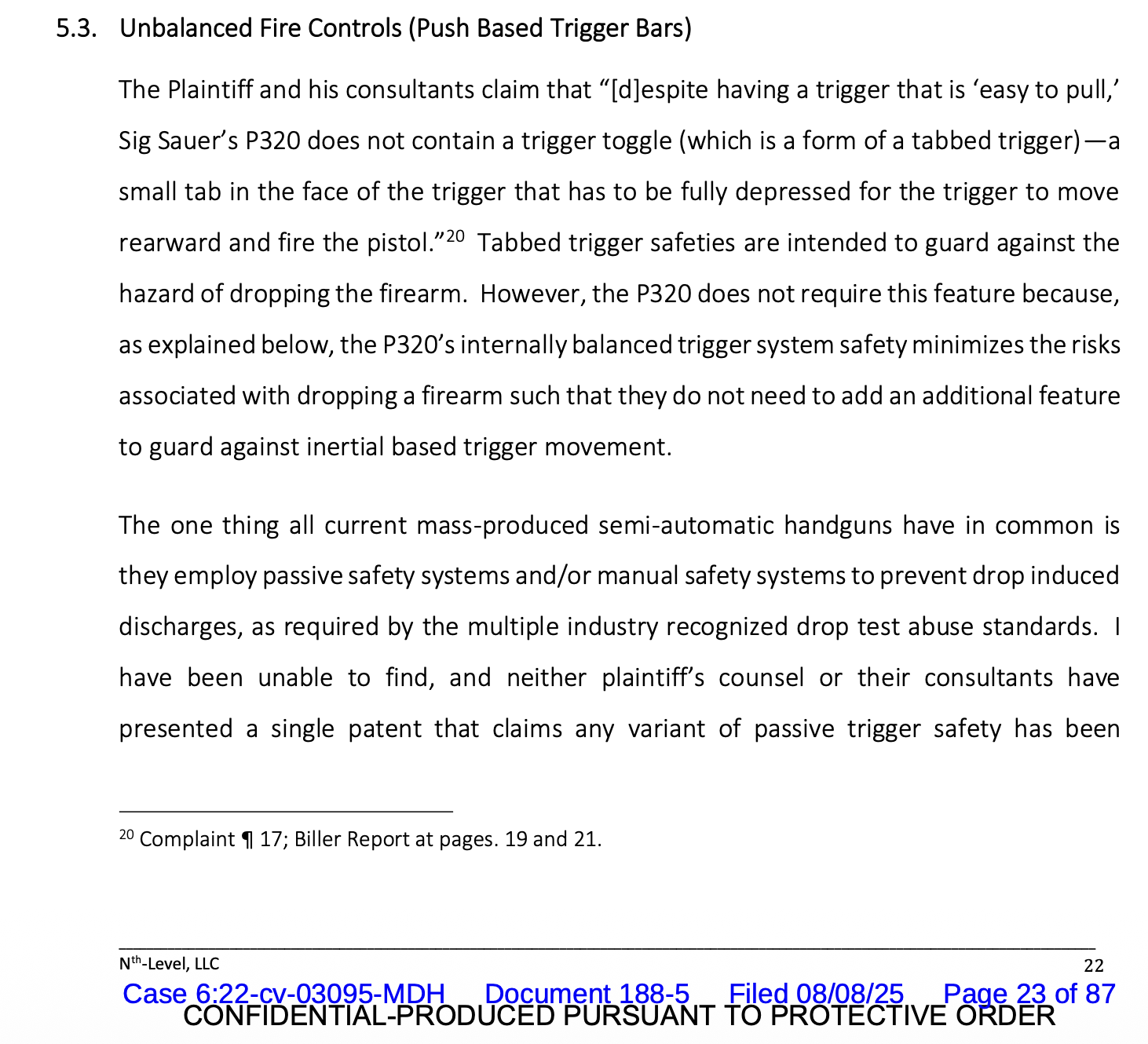
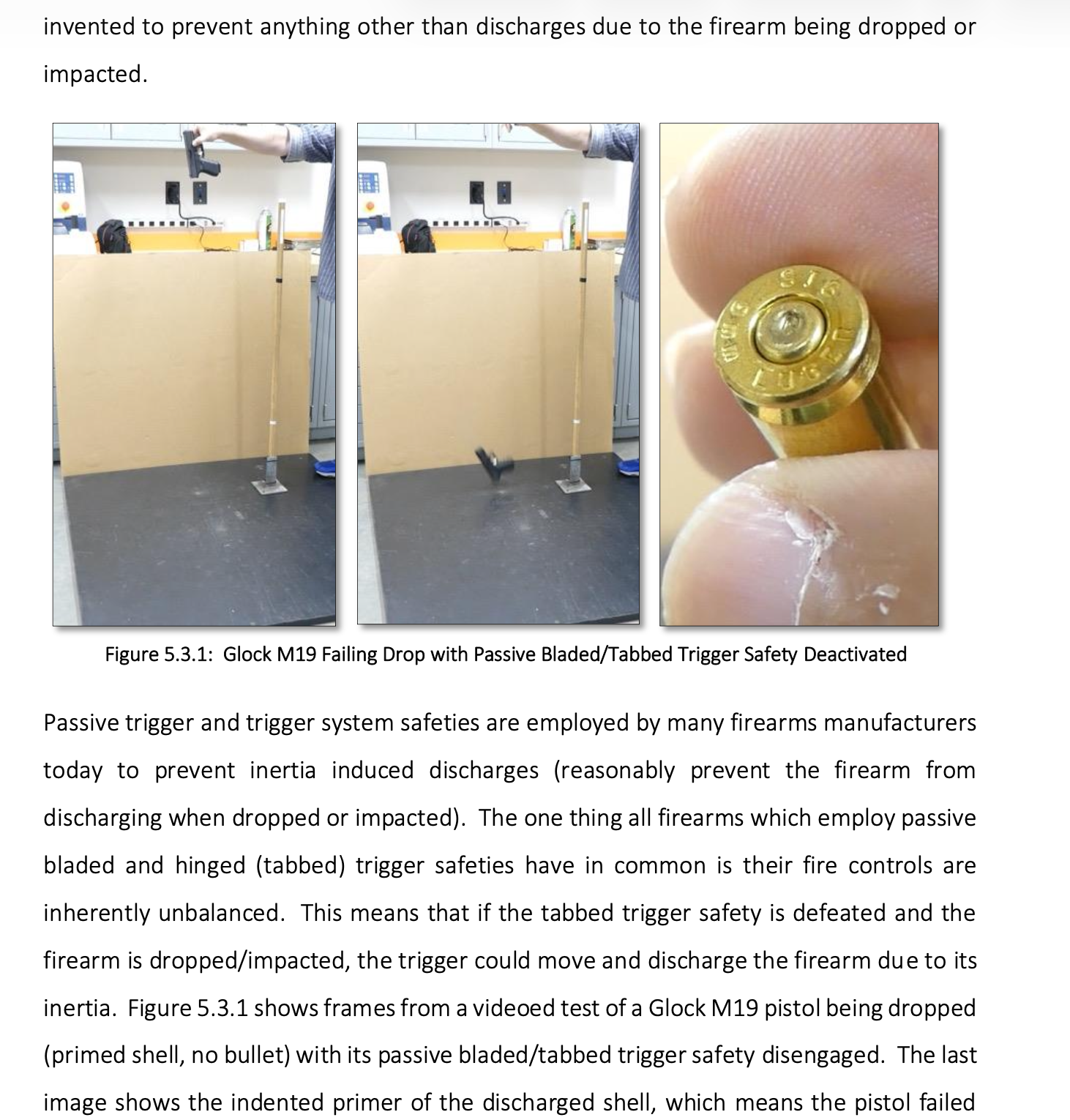
That’s a remarkable acknowledgment. Sig Sauer has never been shy about comparing the P320 favorably to Glock pistols, but here their paid expert is essentially testifying that Glock’s flagship model wouldn’t pass drop tests without its trigger tab in place. It’s a rare moment where the marketing gloss is stripped away, and it raises obvious questions about how Sig’s own “balanced” design fares when subjected to the same kind of scrutiny. I’m not exactly certain it accomplishes the goal that Sig Sauer likely has here, as it leaves open the question why Sig Sauer allowed the P320 to be sold without a trigger tab.
“No Gun is Drop Safe”
Buried in a 2017 media-day email chain is a quote from CEO Ron Cohen that I’d never seen in full before:
“Drop safe — those two words don’t exist together. No gun is drop safe. It’s a function of angle, height and surface.”
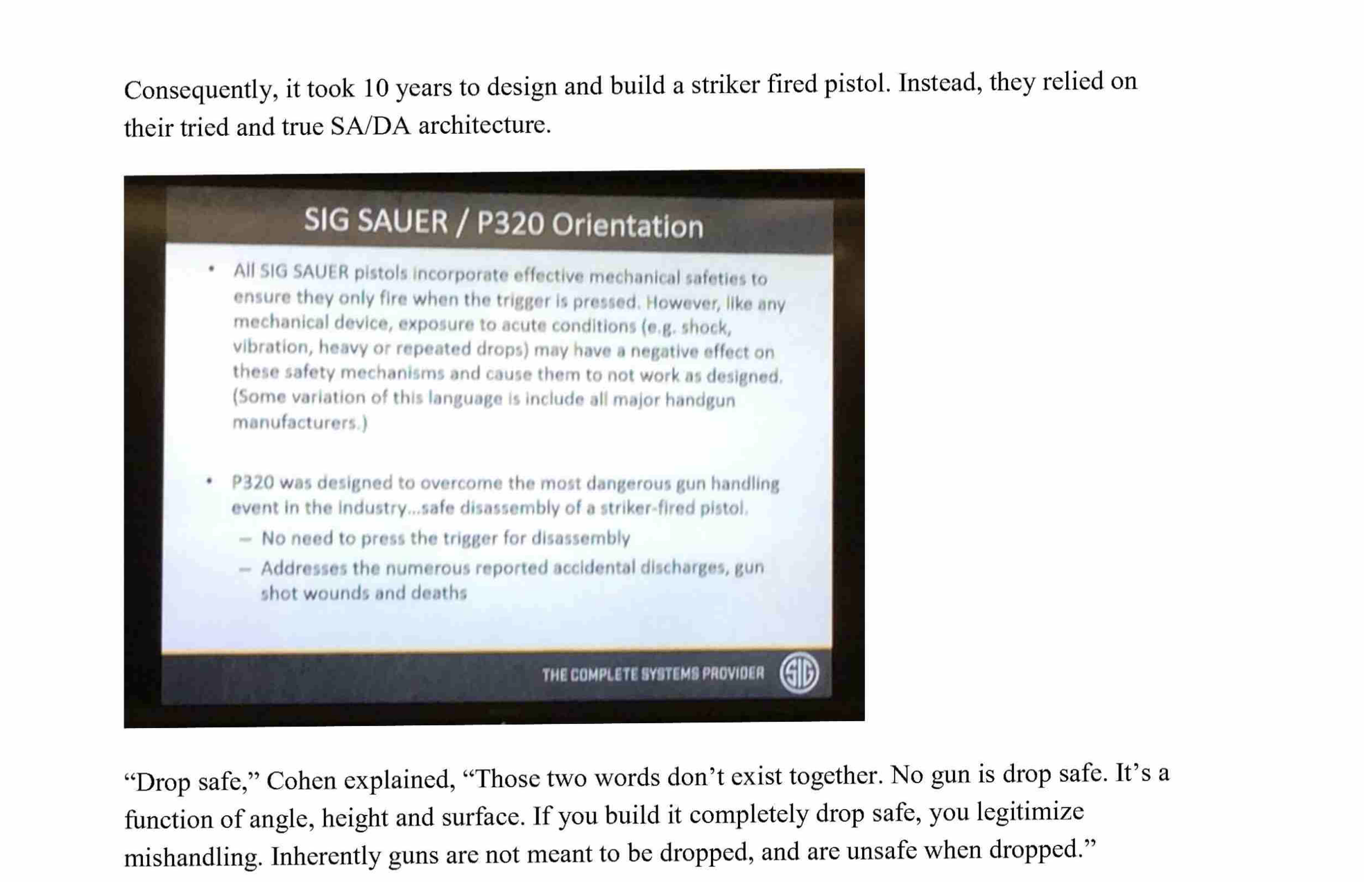
This was said in the context of explaining the P320’s -30° concrete-drop vulnerability — the very issue that led to the voluntary upgrade program. Technically, Cohen’s statement is correct in the most literal sense. But from a consumer or law-enforcement perspective, it reads less like an engineering caveat and more like a shrug at a foreseeable hazard.
The Numbers They Track, But Don’t Advertise
Senior Customer Service Manager Christopher Meyer has kept his own tally of reported P320 unintentional discharges. His declaration breaks them out by year during the class period:
- 2017–2018: 8 incidents
- 2018–2019: 6 incidents
- 2019–2020: 21 incidents
- 2020–2021: 32 incidents
- 2021–April 2022: 9 incidents
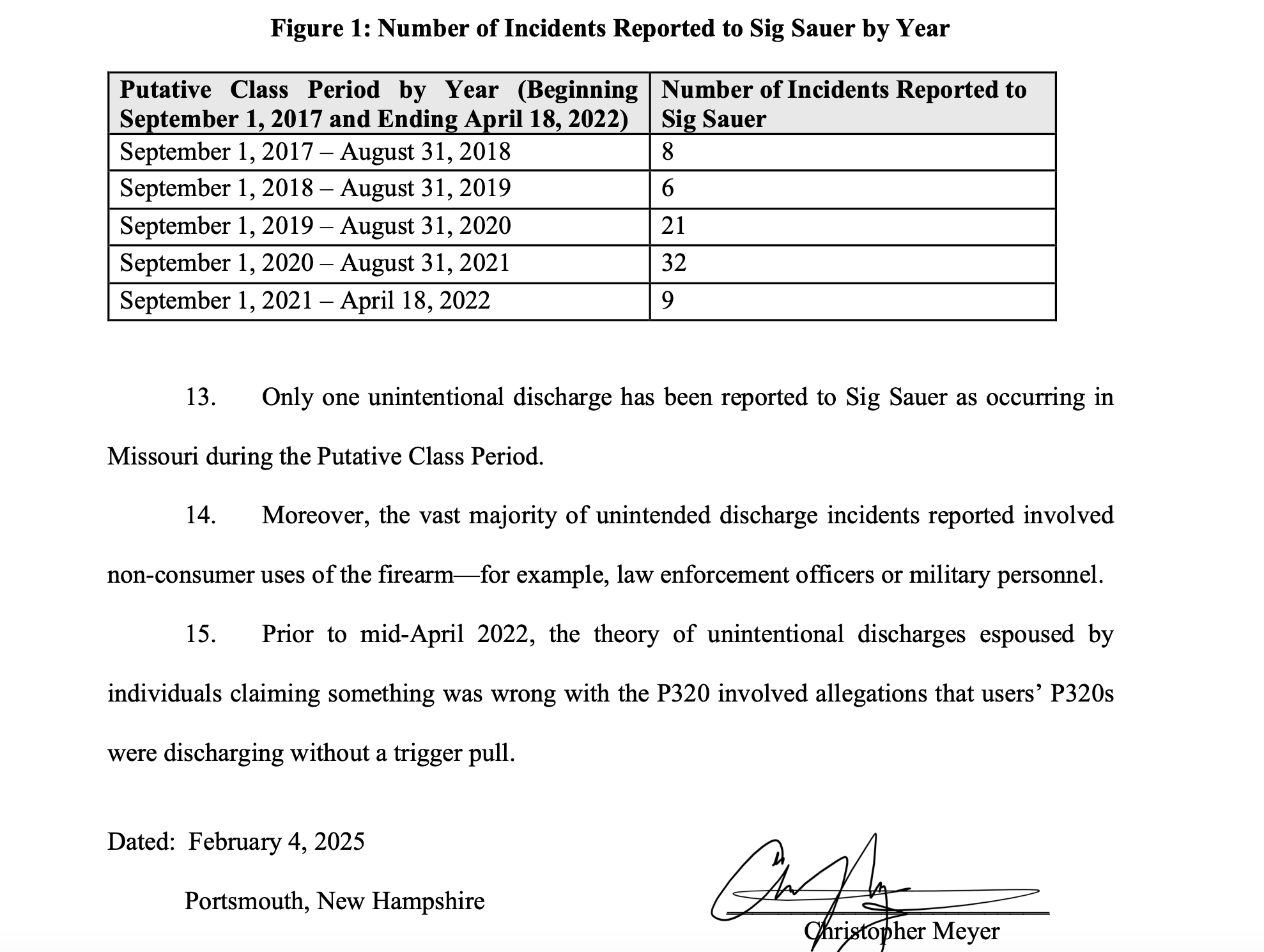
The official line in 2017 was “minimal incidents.” This dataset — from Sig’s own files — shows a steady increase before tapering off in the last partial year.
Still Fighting Over the FMECA
Ed Murphy’s declaration confirms the FMECA was done in February 2017, exactly as the Army’s Modular Handgun System contract required. But the substance of that analysis is still sealed. And in a separate Friday filing, Sig’s attorneys acknowledge there is one unresolved dispute with The Trace’s counsel over what remains sealed.
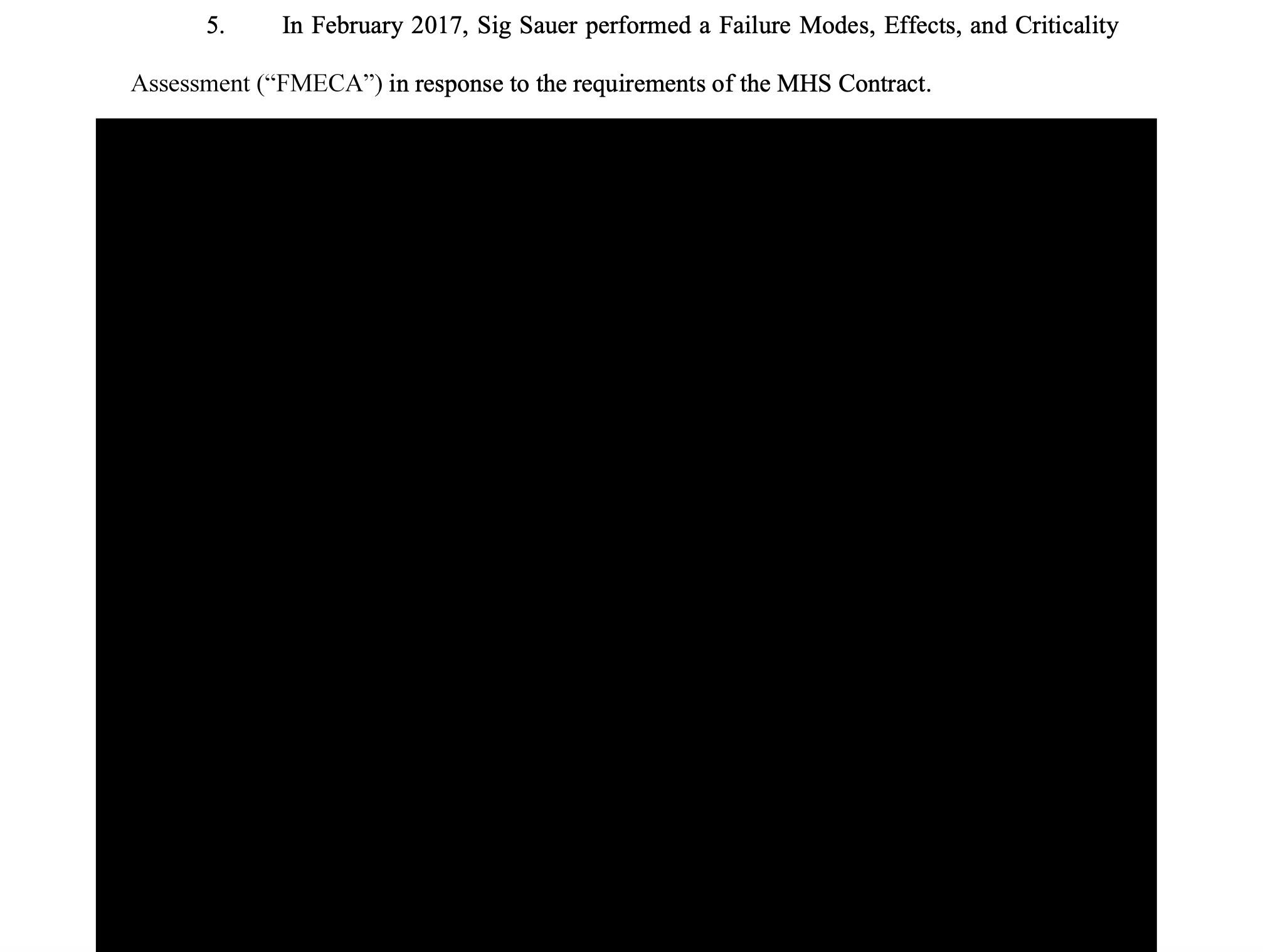
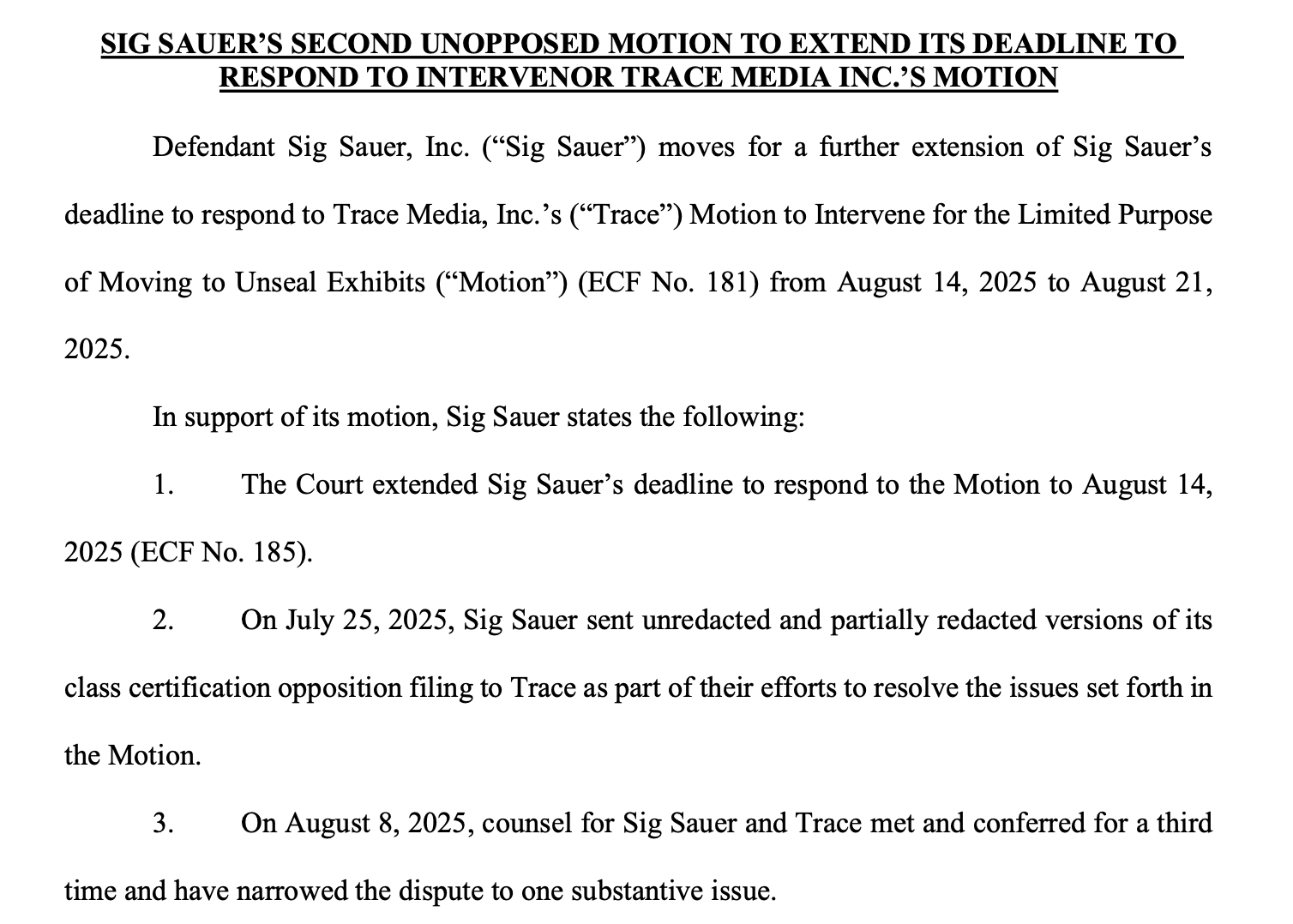
Given the history, it’s hard to see that being anything other than the FMECA — the same document Sig has claimed is a trade secret in court while a senior executive publicly said they “don’t mind” it being out.
Marketing vs. Engineering on Trigger Pull Specs
An internal exchange shows a marketing-friendly 5.5 lb. trigger pull spec on the P320 being “corrected” by engineering to 6.5 lbs. Marketing apparently got the last word on what was published. It’s not the most damning revelation, but it’s another example of how specs in the brochure don’t always match the engineering reality.
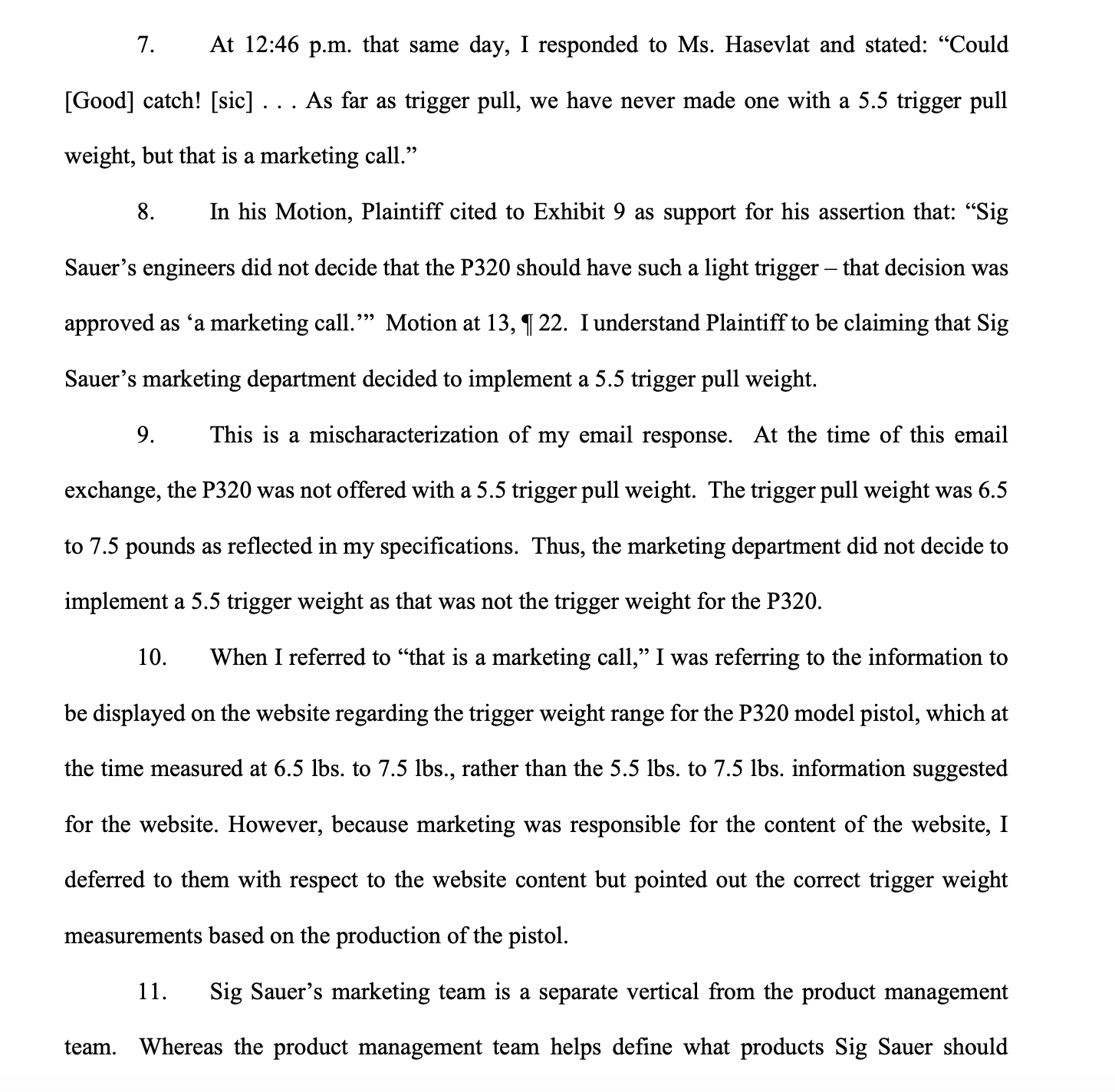
Key Quotes from the FMECA Fight and Friday’s Filings
Phil Strader, VP of Consumer Affairs, Sig Sauer – Hunters HD Gold interview, 2025:
“Now that it is out there, we [Sig] don’t mind.”
(Referring to the unredacted U.S. Army FMECA that I had previously published.)
Ron Cohen, CEO, Sig Sauer – 2017 media-day correspondence:
“Drop safe — those two words don’t exist together. No gun is drop safe. It’s a function of angle, height and surface.”
Derek Watkins, Sig Sauer retained expert – Expert report in Glasscock v. Sig Sauer:
“If the tabbed trigger safety is defeated and the [Glock M19] firearm is dropped/impacted, the trigger could move and discharge the firearm due to its inertia.”
Sig Sauer court filing, opposing public release of the FMECA:
“The engineering details and decisions regarding how to minimize or eliminate potential causes of failure give Sig Sauer a competitive advantage over its competition and [are] trade secrets that would be highly prejudicial to Sig Sauer if exposed to the public.” (Contrast with Strader’s on-camera statement above.)
I’ll keep tracking the docket and posting updates as this fight plays out. If you want to read the new filings yourself, here are all the documents that were released Friday: